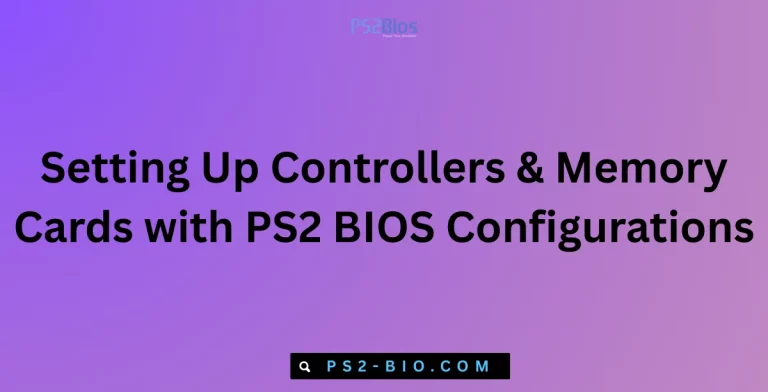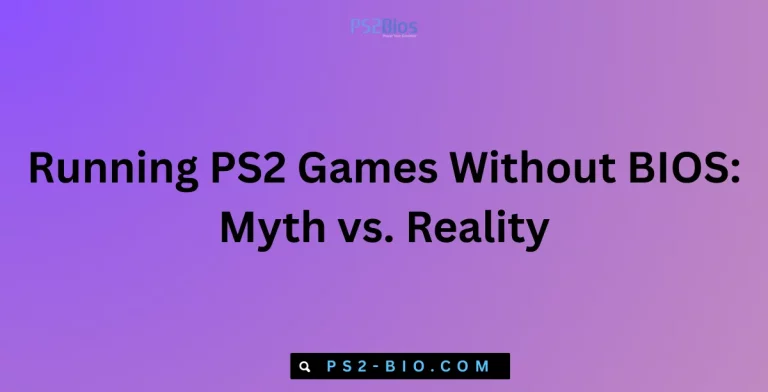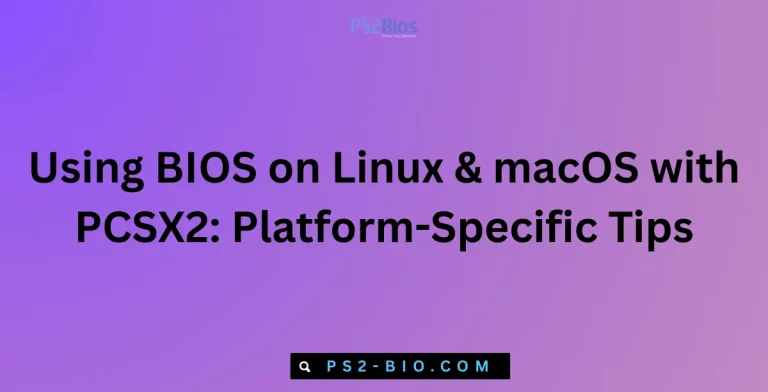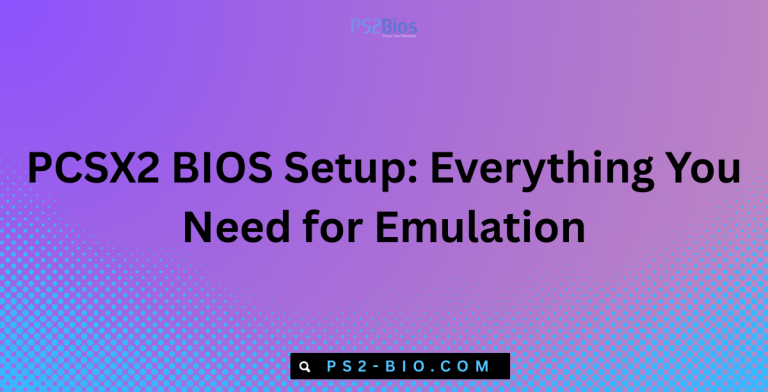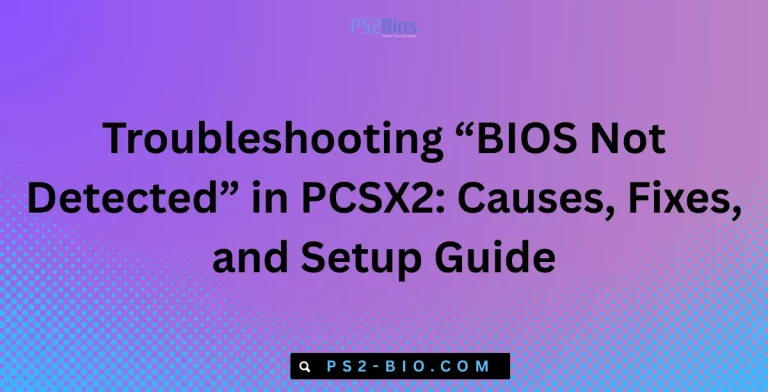Homebrew Development Enabled by PS2 BIOS: Features, Tools, and Setup Guide
Did you know the PS2 BIOS is the key that unlocks PlayStation 2’s hidden potential? Without it, homebrew developers cannot load, test, or run custom applications.
What Is PS2 BIOS?
The PlayStation 2 BIOS (Basic Input Output System) is a firmware set created by Sony Interactive Entertainment. It controls essential hardware operations like memory access, system startup, and file loading.
Every PS2 unit comes with a built-in BIOS stored in flash memory. When a console is powered on, the BIOS initializes the CPU, checks the memory, and prepares the system for loading a disc or program.
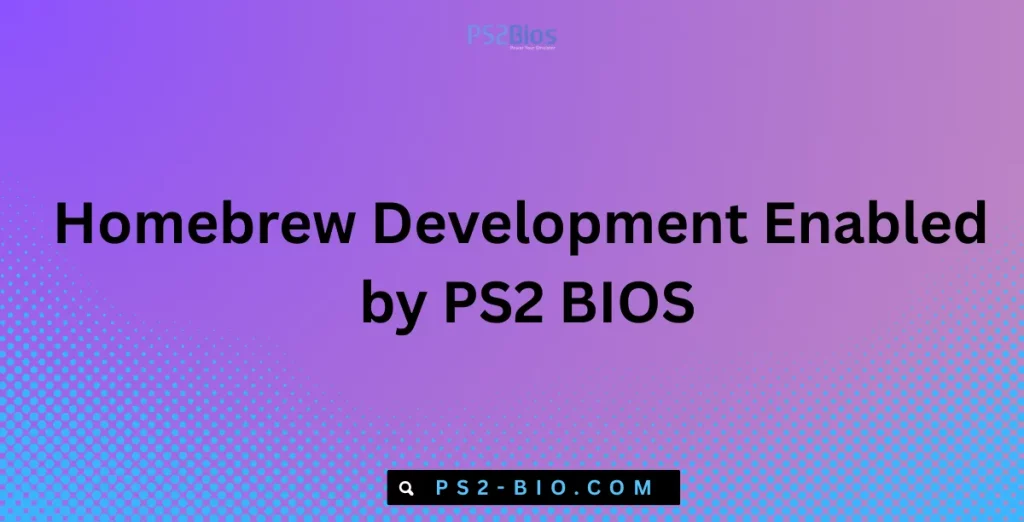
For homebrew development, BIOS plays a critical role. Unlike emulators that simulate console behavior, the BIOS provides original console instructions. This ensures compatibility with PS2 hardware and accurate execution of custom-made software.
Why BIOS Is Essential for Homebrew Development
Developers rely on the PS2 BIOS for several reasons:
- Hardware-Level Access – The BIOS allows direct communication with the PS2’s Emotion Engine CPU and Graphics Synthesizer GPU.
- System Initialization – It handles startup processes, memory card checks, and controller input.
- Program Execution – Homebrew applications and ELF files use BIOS routines for stable performance.
- Accurate Testing – Developers can test applications in conditions identical to a physical PlayStation 2 console.
Without the BIOS, homebrew development would be limited to guesswork, reducing compatibility and stability.
Legal Perspective: Dumping Your Own BIOS
It’s important to clarify: downloading PS2 BIOS files from the internet is illegal since they are copyrighted by Sony.
Homebrew developers must extract (or “dump”) the BIOS from their own PS2 console using tools such as:
- BIOS Dumper – A utility that saves the firmware to a memory card or USB storage.
- uLaunchELF – A homebrew file manager that supports BIOS extraction.
By dumping your own BIOS, you stay within legal boundaries while gaining the essential files for emulation and development.
The Role of PS2 BIOS in Emulators
Homebrew testing often requires emulation before deploying to hardware. The most popular emulator, PCSX2, cannot function without BIOS files.
When paired with BIOS, PCSX2 enables:
- Running PS2 games on PC.
- Testing custom-built applications.
- Debugging homebrew projects with memory and graphics logs.
The BIOS ensures the emulator mimics real console behavior. Developers can analyze how homebrew applications interact with system components in a safe environment.
Tools Enabled by PS2 BIOS for Homebrew Development
With BIOS loaded, developers gain access to powerful tools, including:
- uLaunchELF – Acts as a file manager, allowing the launch of ELF files, copying saves, and testing applications.
- PS2SDK – A development kit offering libraries and APIs for creating PS2-compatible software.
- Open PS2 Loader (OPL) – Runs applications and games from USB or network storage.
- HDLoader – Boots software from internal HDDs, useful for testing large homebrew builds.
- Free McBoot (FMCB) – A memory card exploit that loads homebrew software without modifying hardware.
All of these tools rely on BIOS initialization to run correctly.
Homebrew Possibilities With PS2 BIOS
The BIOS doesn’t just enable tools—it unlocks creative possibilities. Some common uses include:
- Game Mods – Developers can test modifications to PS2 titles by loading patched ELF files.
- Emulators – Homebrew developers ported NES, SNES, and Sega emulators to PS2.
- Media Players – Applications like SMS (Simple Media System) turn the PS2 into a media hub.
- Custom Games – Independent developers create entirely new games using the PS2SDK.
- System Utilities – File managers, BIOS backup tools, and save editors all run through BIOS-level functions.
Setting Up Homebrew Development With PS2 BIOS
Here’s a simplified setup process for developers:
1. Dump the BIOS
- Use BIOS Dumper or uLaunchELF on a real PS2.
- Transfer the dumped files to your PC.
2. Install PCSX2
- Download the emulator from the official PCSX2 site.
- Place your dumped BIOS files in the
/biosfolder.
3. Configure PCSX2
- Open PCSX2, select BIOS settings, and choose your region BIOS (e.g., USA, Japan, Europe).
- Enable developer tools like logging and debugging.
4. Start Homebrew Testing
- Load ELF files through PCSX2.
- Use BIOS routines to monitor performance and troubleshoot compatibility.
5. Deploy on Real Hardware
- Transfer the tested ELF files to a memory card or USB.
- Use Free McBoot to load and run the application on a real PS2.
Technical Features of PS2 BIOS Relevant to Development
The PS2 BIOS provides access to:
- Memory Card I/O – Essential for reading and writing saved data.
- Controller Input Handling – Ensures smooth response from DualShock 2 controllers.
- Disc Authentication – While primarily for games, homebrew developers bypass it using exploits like Free McBoot.
- File System Support – BIOS supports FAT file system, critical for reading external storage.
These functions are why BIOS remains at the core of PS2 development.
Advantages of BIOS-Enabled Homebrew Development
- Accurate Emulation – Ensures software runs identically on emulator and hardware.
- Enhanced Debugging – Developers can trace errors using BIOS logging.
- Hardware Compatibility – BIOS routines guarantee stable access to memory and controllers.
- Creative Freedom – Developers can design games, apps, and utilities without relying on Sony’s official devkits.
Challenges and Limitations
Despite its benefits, BIOS-enabled homebrew has challenges:
- Legal Risks – Sharing BIOS files is piracy. Developers must dump their own legally.
- Hardware Constraints – PS2 has only 32 MB of RAM, limiting advanced projects.
- Complex Programming – Requires knowledge of MIPS assembly and C for performance.
Still, with dedication, developers continue to push PS2 beyond its commercial lifespan.
The Ongoing Impact of PS2 BIOS on the Homebrew Community
Even decades after release, PS2 remains a hub for experimentation. The BIOS allows developers to keep building tools, games, and utilities long after official support ended.
Projects like Free McBoot, Open PS2 Loader, and emulators for retro consoles prove the system’s versatility. The BIOS is not just firmware—it is the foundation for an active homebrew ecosystem that preserves and expands the PlayStation 2 legacy.
Conclusion
The PS2 BIOS is more than a startup program—it is the gateway to homebrew development. By enabling hardware-level access, powering tools, and supporting emulators, BIOS makes it possible to create and test applications decades after the PS2’s release.


